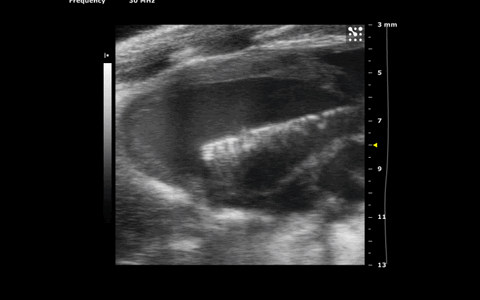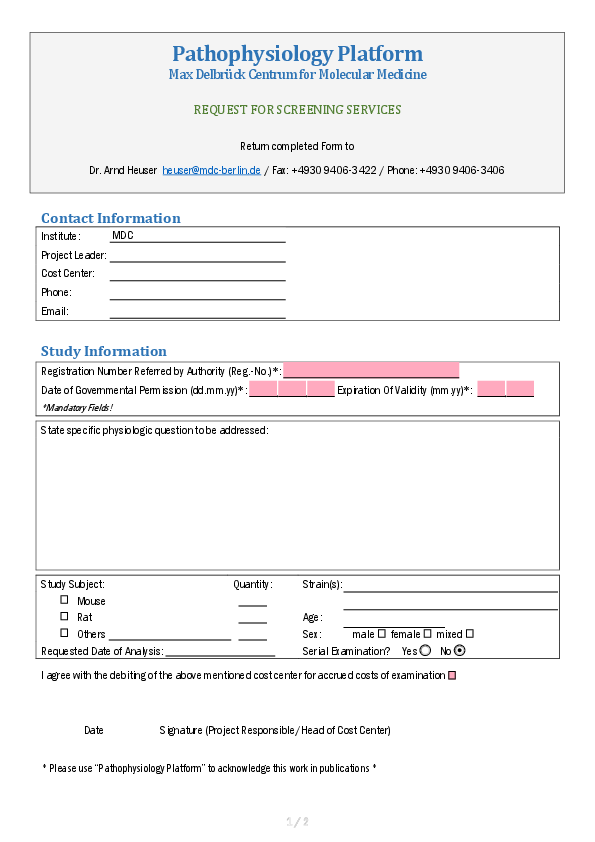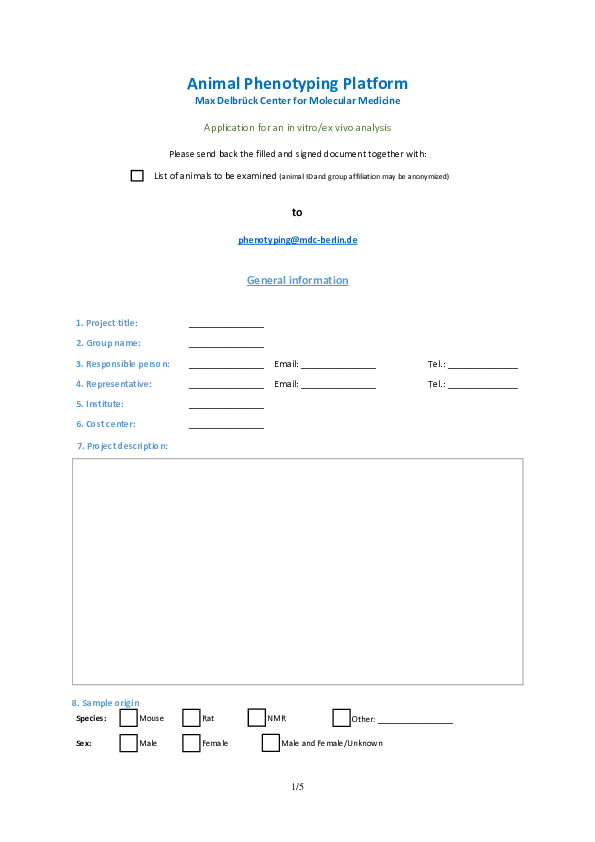
Hemodynamic Measurements
Conductance Catheter Technology
For several decades, the complex relationship between pressure and volume gradients during the heart cycle has been used to assess myocardial performance in humans.
A specialized measurement device, the conductance catheter, generates an electro-magnetic field within which alterations can be measured.
Since blood has a different conductivity than the surrounding myocardial tissue, it is possible to quantify the amount of blood filling the ventricular lumen at every point in heart cycle.
A co-integrated micro-manometer captures pressure data, which means that characteristic volume-pressure-loops can be generated in real-time and analyzed afterwards.
Echocardiografic image of a conductance catheter in the left ventricle of a mouse
New conductance catheters small enough to be inserted into the ventricular lumen of mice have made this technique an outstanding tool to measure hemodynamic behavior in studies of model organisms, expanding the types of investigations that can be carried out in a pre-clinical context.
We use leading conductance catheter technology of the Millar Pressure Volume System (Millar Instruments) to take hemodynamic measurements.
Advanced Evaluation of Cardiac Function
This system goes beyond determining the most common values of cardiac function (such as the maximum volume during a heart cycle) to assess factors such as minimum pressure, ejection fraction (EF), cardiac output (CO) and many more parameters relevant to myocardial performance and contractility.
Transient experimental pre-load alteration makes it easier to assess the following: pressure-volume relations at end-systole (ESPVR) and end-diastole (EDPVR), the preload-recruitable stroke work (PRSW), the point of maximum increase of pressure (dP/dtmax), which is traditionally used in dP/dtmax vs EDV (end-diastolic volume) relations.
The underlying pressure-volume measurements can be combined into characteristic graphs (pv-loops) in real-time and analyzed afterwards, facilitating the comparison of different phenotypes and giving insights into myocardial behavior.
Available Parameters
| Parameter | Description |
|---|---|
| Pmax/min | maximum/minimum pressure |
| Pes/ed | pressure at the end of systole/diastole |
| dP/dtmax | point of maximum pressure increase |
| dP/dtmin | point of maximum pressure decrease |
| Vmax/min | maximum/minimum volume |
| Ves/ed | volume at the end of systole/diastole |
| dV/dtmax | point of maximum volume increase |
| dV/dtmin | point of maximum volume decrease |
| HR | heart rate |
| SV | stroke volume |
| CO | cardiac output |
| EF | ejection fraction |
| SW | stroke work |
| PRSW | preload recruitable stroke work |
| ESPVR | end-systolic pressure-volume relation |
| EDPVR | end-diastolic pressure-volume relation |
| Tau ( τ ) | time constant of active relaxation |
Requests & Application
For booking facility services of in vivo phenotyping, please use our application form:
Orders of our in vitro blood tests can be issued via this form:
Don't hesitate to contact us for further questions!






